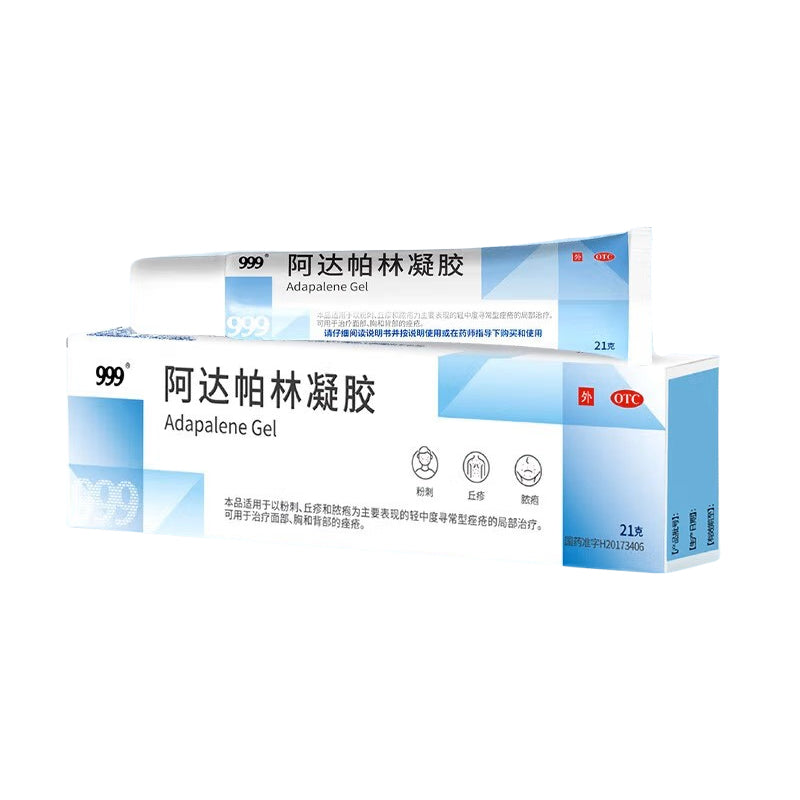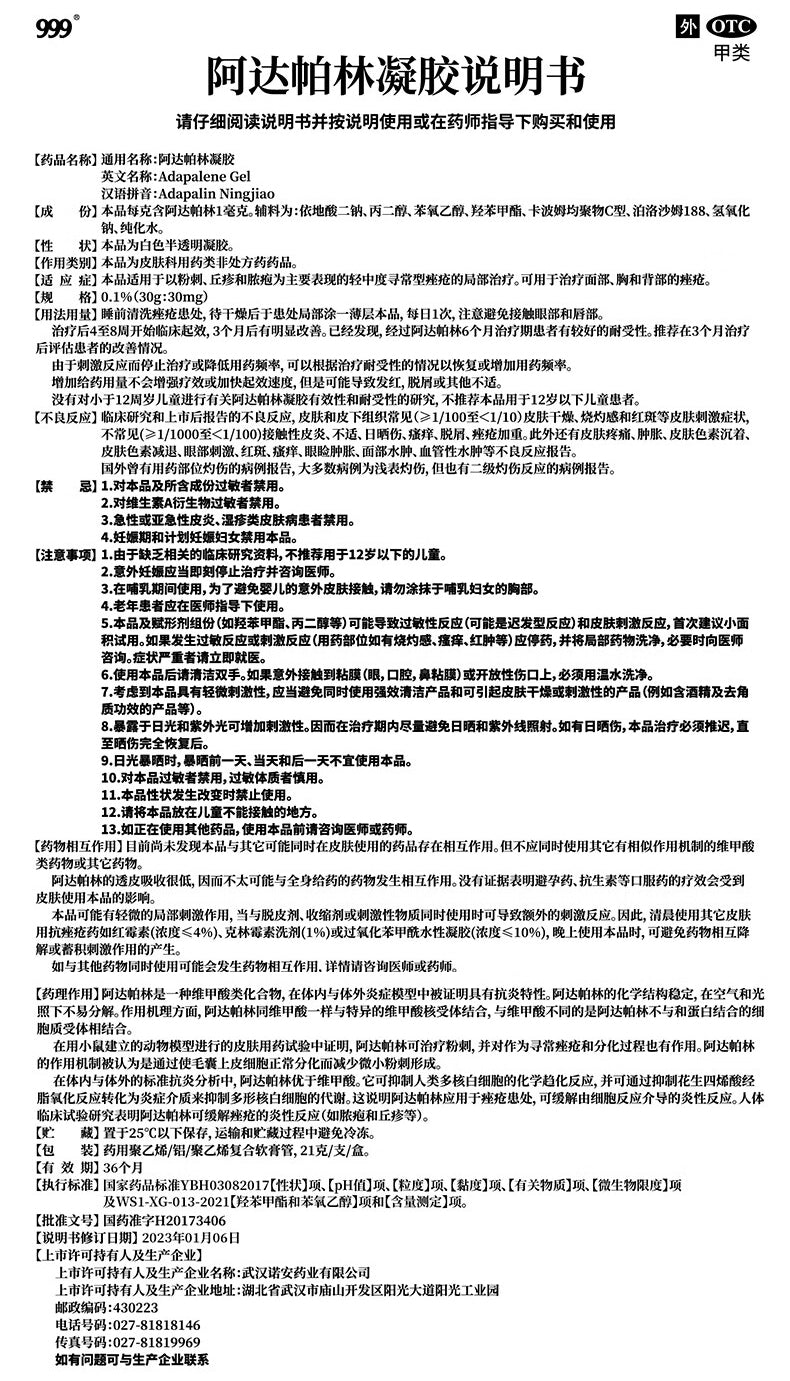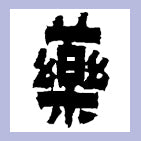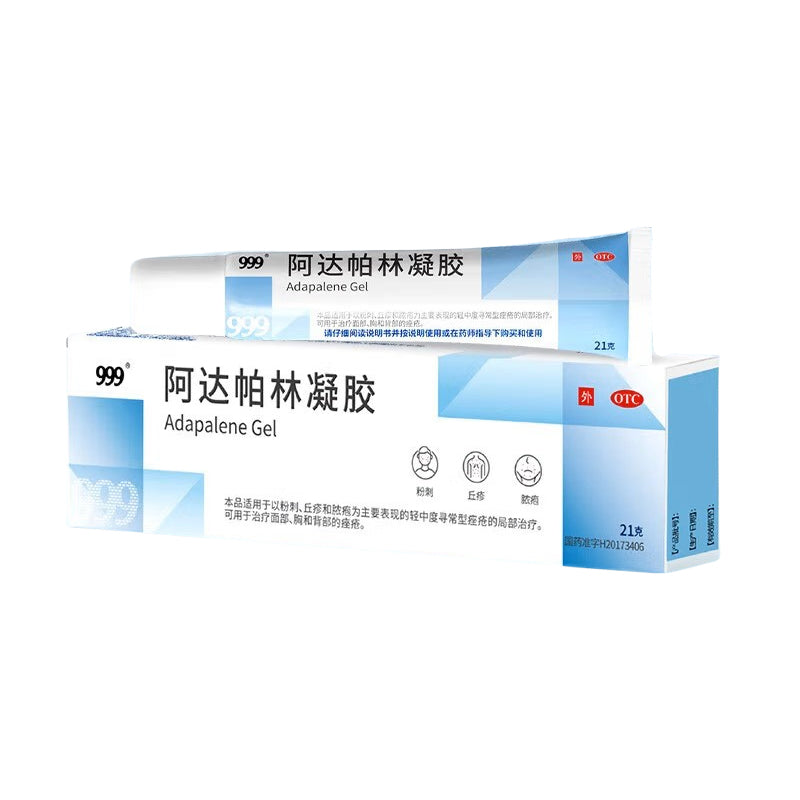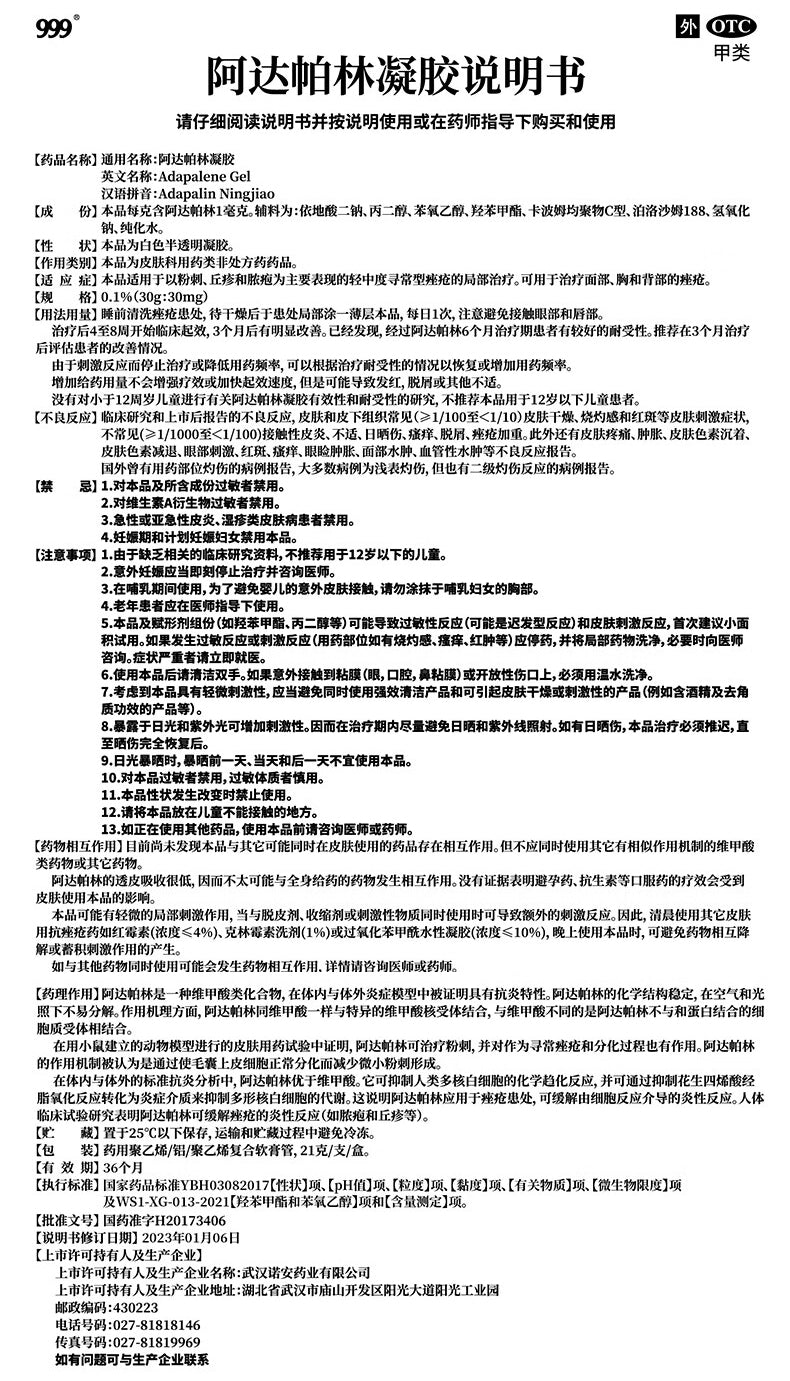China Resources Sanjiu Medical & Pharmaceutical Co., Ltd
999 阿达帕林凝胶, 0.1%, 21g, Adapalene Gel
999 阿达帕林凝胶, 0.1%, 21g, Adapalene Gel
无法加载取货服务可用情况
Drug Name
Adapalene Gel
Ingredients
Each gram of this product contains 1 milligram of adapalene. Auxiliary ingredients include: disodium edetate, propylene glycol, phenoxyethanol, methylparaben, carbomer homopolymer type C, poloxamer 188, sodium hydroxide, and purified water.
Appearance
This product is a white translucent gel.
Category
This product is a non-prescription medication for dermatological use.
Indications
This product is indicated for the topical treatment of mild to moderate common acne vulgaris primarily manifested as comedones, papules, and pustules. It can be used to treat acne on the face, chest, and back.
Specification
0.1%
Usage
Cleanse the acne-affected area before bedtime, and apply a thin layer of this product to the affected area after it dries. Use once daily, and avoid contact with the eyes and lips. Clinical efficacy begins after 4 to 8 weeks of treatment, with significant improvement after 3 months. Patients have been found to have good tolerability after a 6-month treatment period with adapalene. It is recommended to assess the patient's improvement after 3 months of treatment.
If treatment is discontinued or the frequency of application is reduced due to irritation, the frequency can be restored or increased based on treatment tolerability.
Increasing the dosage will not enhance efficacy or accelerate onset but may cause redness, peeling, or other discomfort.
No studies on the effectiveness and tolerability of adapalene gel in children under 12 years of age have been conducted, and this product is not recommended for use in pediatric patients under 12 years old.
Adverse Reactions
Adverse reactions reported in clinical studies and post-marketing include common (>1/100 to <1/10) skin and subcutaneous tissue reactions such as dry skin, burning sensation, and erythema. Less common (>1/1000 to <1/100) reactions include contact dermatitis, discomfort, sunburn, pruritus, peeling, acne aggravation, as well as skin pain, swelling, skin hyperpigmentation, skin hypopigmentation, eye irritation, facial edema, angioedema, etc. There have also been reports of cases of burns at the application site abroad, most of which were superficial burns, but there were also cases of second-degree burn reactions.
Contraindications
Patients who are allergic to this product or any of its ingredients should not use it.
Patients allergic to vitamin A derivatives should not use it.
Patients with acute or subacute dermatitis or eczema-like skin diseases should not use it.
Pregnant women and women planning pregnancy should not use this product.
Precautions
1, Due to the lack of relevant clinical study data, it is not recommended for use in children under 12 years old.
2, If pregnancy occurs unexpectedly, treatment should be discontinued immediately and a physician should be consulted.
3, During lactation, to avoid accidental skin contact with the infant, do not apply to the breasts of lactating women.
4, Elderly patients should use this product under the guidance of a physician.
5, This product and its excipients (such as methylparaben, propylene glycol, etc.) may cause allergic reactions (possibly delayed-type reactions) and skin irritation. It is recommended to test on a small area for the first time. If an allergic reaction or irritation occurs (such as burning sensation, pruritus, redness, etc. at the application site), discontinue use, wash the area with water, and consult a physician if necessary. Seek medical attention immediately if symptoms are severe.
6, Wash your hands after using this product. If accidental contact with mucous membranes (eyes, mouth, nasal mucosa) or open wounds occurs, rinse with warm water.
7, Due to its mild irritancy, avoid concurrent use with potent cleansing products and products that can cause skin dryness or irritation (such as those containing alcohol and exfoliating ingredients).
8, Exposure to sunlight and UV light can increase irritation. Therefore, avoid sun exposure and UV radiation during treatment. If sunburn occurs, treatment with this product should be postponed until the sunburn has fully healed.
9, Avoid using this product the day before, the day of, and the day after sun exposure.
Patients allergic to this product should not use it, and those with allergic constitutions should use it with caution.
10, Do not use this product if its appearance has changed.
Keep this product out of the reach of children.
11, If you are using other medications, consult your physician or pharmacist before using this product.
Drug Interactions
No drug interactions have been found between this product and other drugs that may be used on the skin simultaneously. However, other retinoid drugs or medications with similar mechanisms of action should not be used concurrently.
The percutaneous absorption of adapalene is low, so it is unlikely to interact with systemically administered drugs. There is no evidence that the efficacy of oral contraceptives, antibiotics, or other oral medications will be affected by the topical use of this product. This product may have mild local irritation, and when used concurrently with peeling agents, astringents, or irritants, it may cause additional irritation. Therefore, to avoid drug degradation or accumulation of irritation, it is recommended to use other topical anti-acne medications such as erythromycin (<4% concentration), clindamycin lotion (1%-6% concentration), or benzoyl peroxide aqueous gel (<10% concentration) in the morning and this product at night.
If drug interactions may occur when used concurrently with other medications, consult your physician or pharmacist for details.
Pharmacological Action
Adapalene is a retinoid compound that has been proven to have anti-inflammatory properties in both in vitro and in vivo inflammatory models. The chemical structure of adapalene is stable and does not easily decompose under air and light exposure. In terms of mechanism of action, adapalene binds to specific retinoic acid nuclear receptors, similar to retinoic acid, but unlike retinoic acid, adapalene does not bind to cytosolic receptors bound to proteins. Skin medication trials conducted in animal models using mice have demonstrated that adapalene can treat comedones and also has an effect on the differentiation process of acne vulgaris. The mechanism of action of adapalene is believed to reduce the formation of microcomedones by normalizing the differentiation of follicular epithelial cells. In standard in vitro and in vivo anti-inflammatory analyses, adapalene is superior to retinoic acid. It inhibits the chemotactic response of human polymorphonuclear leukocytes and inhibits the metabolism of polymorphonuclear leukocytes by inhibiting the conversion of arachidonic acid into inflammatory mediators through lipoxygenation, indicating that adapalene applied to acne lesions can alleviate inflammatory reactions mediated by cellular responses. Human clinical trial studies have shown that adapalene can alleviate the inflammatory responses of acne (such as pustules and papules).
Storage
Store below 25°C. Avoid freezing during transportation and storage.
Packaging
Pharmaceutical polyethylene/aluminum/polyethylene composite ointment tube, 21 grams per tube per box.
Expiration
36 months
If you are seeking additional discounts or have an interest in purchasing other Chinese medications, please feel free to contact us at any time. We are fully dedicated to offering you comprehensive services tailored to your individual needs.
Share
